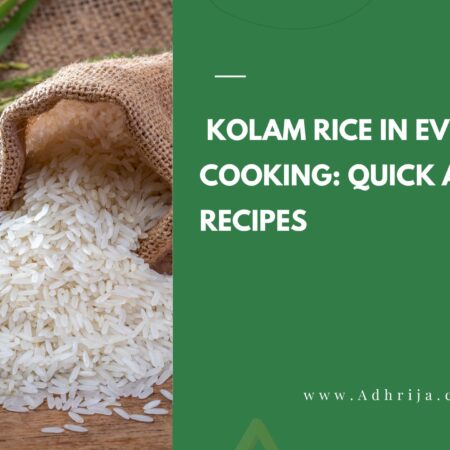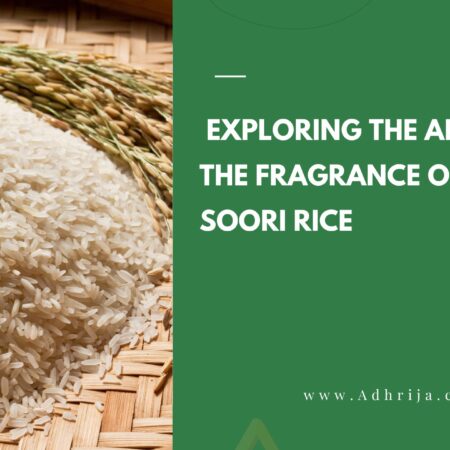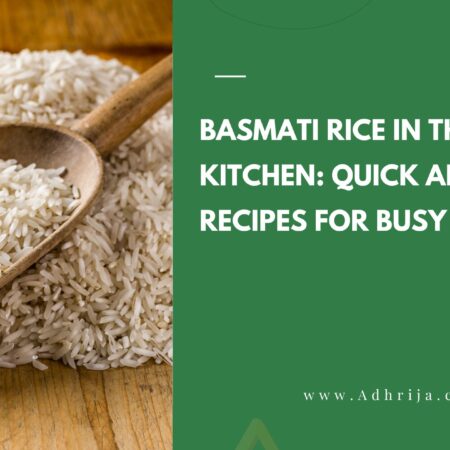
What is Basmati Rice?
Basmati rice is a long-grain variety of rice that is known for its distinct aroma and delicate flavor. It originated in the Indian subcontinent and is now cultivated in various parts of the world. The word “basmati” translates to “fragrant” in Hindi, which perfectly describes the unique scent and taste of this rice. In this article we will discuss about Cooking Basmati Rice with perfection.
The History and Origins of Basmati Rice
The history of basmati rice dates back thousands of years. It is believed to have been grown in the foothills of the Himalayas in India and Pakistan. The fertile soil and climate of this region contribute to the exceptional quality of basmati rice.
For centuries, basmati rice has been a staple food in the Indian subcontinent. It was highly valued and considered a luxury item due to its exquisite flavor and aromatic qualities. Over time, basmati rice gained popularity in other parts of the world and is now widely consumed and appreciated for its unique characteristics.
Different Varieties of Basmati Rice
There are several varieties of basmati rice available in the market, each with its own unique characteristics. The most popular varieties include Indian basmati, Pakistani basmati, and Texmati. Indian basmati is known for its long and slender grains, while Pakistani basmati is slightly shorter and thicker. Texmati, on the other hand, is a hybrid variety that combines the best qualities of basmati and American long-grain rice.
When choosing basmati rice, it’s important to look for brands that offer high-quality, authentic rice. This ensures that you get the true basmati experience and achieve optimal results when cooking.
Health Benefits of Basmati Rice
In addition to its delightful taste and aroma, basmati rice also offers several health benefits. It is a good source of carbohydrates, which provide the body with energy. Basmati rice is also low in fat and cholesterol, making it a healthier choice compared to some other rice varieties.
Furthermore, basmati rice has a low glycemic index, which means that it releases sugar into the bloodstream at a slower rate. This makes it a suitable option for individuals who are watching their blood sugar levels or managing diabetes.
Additionally, basmati rice contains essential nutrients such as vitamins and minerals, including B vitamins and zinc. These nutrients play a vital role in maintaining overall health and well-being.
Tips for Cooking of Basmati Rice Perfectly
Cooking basmati rice to perfection requires attention to detail and the right technique. Here are some expert tips to help you achieve perfect results every time:
- Rinse the rice: Before cooking, it’s important to rinse the basmati rice thoroughly. This removes any excess starch and prevents the rice from becoming sticky. Place the rice in a fine-mesh sieve and rinse it under cold water until the water runs clear.
- Soak the rice: Soaking the basmati rice for at least 30 minutes before cooking helps to soften the grains and ensures even cooking. Soaking also helps to enhance the fluffiness of the rice.
- Use the right amount of water: The ratio of rice to water is crucial for achieving perfect results. For every cup of basmati rice, use one and a half cups of water. This ensures that the rice cooks evenly and absorbs the right amount of moisture.
- Cook on low heat: When cooking basmati rice, it’s important to use low heat. This allows the rice to cook slowly and evenly, resulting in perfectly cooked grains that are fluffy and separate.
- Let it rest: After cooking, allow the basmati rice to rest for a few minutes before fluffing it with a fork. This helps to redistribute the moisture and ensures that the rice is evenly cooked.
By following these tips, you’ll be able to cook basmati rice to perfection and enjoy its delightful taste and texture.
Techniques for Achieving Perfect Fluffiness in Basmati Rice
Achieving perfect fluffiness in basmati rice requires specific techniques that enhance the texture and appearance of the cooked rice. Here are some expert techniques to help you achieve that desired fluffiness:
- Fluff with a fork: After the rice is cooked, use a fork to gently fluff it. This separates the grains and prevents them from clumping together. Avoid using a spoon or stirring vigorously, as this can make the rice sticky.
- Steam the rice: To enhance the fluffiness of basmati rice, you can steam it after cooking. Transfer the cooked rice to a heatproof dish, cover it with a clean kitchen towel or aluminium foil, and let it steam for 5-10 minutes. This allows the rice to absorb any excess moisture and results in light and fluffy grains.
- Use the right pot: When cooking basmati rice, it’s important to use a pot with a tight-fitting lid. This helps to trap the steam and allows the rice to cook evenly. Avoid lifting the lid while the rice is cooking, as this can disrupt the cooking process and result in unevenly cooked rice.
By incorporating these techniques into your cooking process, you’ll be able to achieve the perfect fluffiness in your basmati rice, making it a delight to eat and serve.
Flavoring Options for Basmati Rice
Basmati rice is a versatile ingredient that can be easily flavoured to suit different tastes and cuisines. Here are some popular flavouring options to enhance the taste of your basmati rice:
- Saffron: Infusing basmati rice with saffron adds a beautiful golden colour and a subtle floral aroma. Soak a few strands of saffron in warm water and add it to the rice while cooking.
- Cinnamon and cardamom: Adding whole cinnamon sticks and cardamom pods to the cooking water imparts a warm and aromatic flavor to the rice. These spices pair well with savory and sweet dishes alike.
- Herbs and spices: Experiment with different herbs and spices to add depth and complexity to your basmati rice. Some popular options include cumin seeds, turmeric, cloves, and bay leaves. Simply toast the spices in oil or ghee before adding the rice and water.
- Coconut milk: For a creamy and tropical twist, substitute a portion of the water with coconut milk. This adds a rich and slightly sweet flavor to the rice, perfect for pairing with curries and other spicy dishes.
By exploring different flavoring options, you can take your basmati rice to a whole new level and create unique and delicious dishes.
Pairing Basmati Rice with Different Dishes
Basmati rice is a versatile accompaniment that pairs well with a wide range of dishes. Here are some popular combinations to inspire your culinary creations:
- Curries: Basmati rice is a classic choice to serve with various curries, whether they are Indian, Thai, or Middle Eastern. The fluffy texture and delicate flavor of the rice complement the rich and spicy flavors of curries.
- Biryani: Biryani is a fragrant rice dish that is often made with basmati rice. The rice is cooked with layers of meat, vegetables, and aromatic spices, resulting in a flavorful and satisfying one-pot meal.
- Grilled or roasted meats: The light and fluffy nature of basmati rice makes it a perfect pairing for grilled or roasted meats. Whether it’s chicken, lamb, or beef, the rice acts as a neutral base that allows the flavors of the meat to shine.
- Stir-fries: Basmati rice can also be used as a base for stir-fried dishes. Its subtle flavor and fluffy texture provide a satisfying contrast to the bold and vibrant flavors of stir-fried vegetables or protein.
When pairing basmati rice with different dishes, consider the flavors and textures of the main dish and choose a variety of basmati rice that complements it well.
Popular Basmati Rice Recipes
Here are two popular basmati rice recipes that showcase the versatility and deliciousness of this exquisite rice:
Recipe 1: Vegetable Biryani
Ingredients:
- 2 cups basmati rice
- 1 cup mixed vegetables (carrots, peas, beans)
- 1 onion, thinly sliced
- 2 cloves garlic, minced
- 1-inch piece of ginger, grated
- 1 teaspoon cumin seeds
- 1 teaspoon garam masala
- 1 teaspoon turmeric powder
- Salt to taste
- Fresh cilantro, for garnish
Instructions:
- Rinse the basmati rice under cold water until the water runs clear. Soak the rice in water for 30 minutes, then drain.
- Heat oil in a large pot over medium heat. Add the cumin seeds and cook until they start to sizzle.
- Add the sliced onion, garlic, and ginger to the pot and sauté until the onion is golden brown.
- Add the mixed vegetables and cook for a few minutes until they start to soften.
- Stir in the garam masala, turmeric powder, and salt. Cook for another minute.
- Add the soaked and drained rice to the pot and gently stir to combine with the vegetables and spices.
- Pour in enough water to cover the rice by about an inch. Bring to a boil, then reduce the heat to low and cover the pot with a tight-fitting lid.
- Cook for about 15-20 minutes, or until the rice is tender and fully cooked.
- Remove from heat and let the biryani sit, covered, for 5 minutes. Fluff the rice with a fork and garnish with fresh cilantro before serving.
Conclusion
Mastering the art of cooking with basmati rice is a delightful journey that allows you to explore different flavors and create delicious meals. By understanding the origins and varieties of basmati rice, as well as incorporating expert tips and techniques, you can achieve perfect fluffiness and enhance the taste of your dishes.
Whether you choose to pair basmati rice with curries, grilled meats, or stir-fries, its delicate flavor and fluffy texture make it a versatile accompaniment that complements a wide range of cuisines.
So, go ahead and experiment with different flavoring options, try out popular basmati rice recipes, and enjoy the wonderful world of cooking with basmati rice. With the right knowledge and techniques, you’ll soon become an expert in creating perfectly fluffy and delicious basmati rice dishes.







